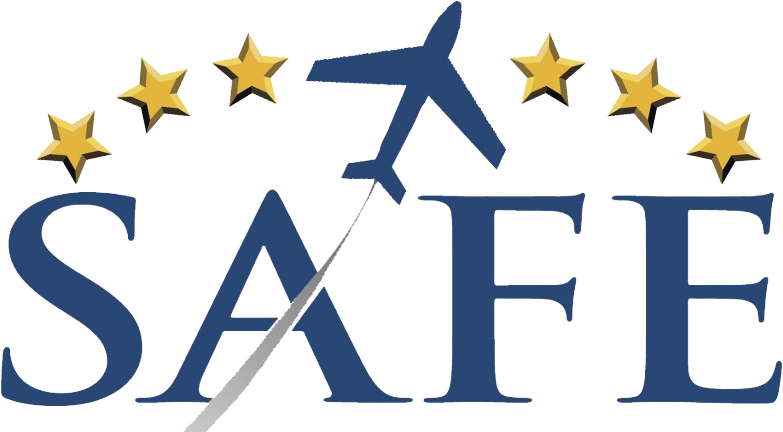Several years ago I was invited by the FAA to give a presentation at a required training event for designated pilot examiners (DPEs). My talk was titled, “Do No Harm!” That title was taken from the oath administered to new physicians in which they are admonished to always leave their patients in better condition after their treatment than before. My presentation featured several reconstructions of accidents where the actions of CFIs and DPEs had been a contributing cause. Yes, there have been accidents, even fatal ones, on checkrides.
My presentation was just a little more than one hour, a small part of an all day event. As the day unfolded, the term “gatekeeper” was used numerous times by the several presenters. The group was told that the CFI must be the “gatekeeper” to make sure that all pilots are competent in their skill, knowledge, and decision-making.
By mid afternoon, my stomach was getting an uneasy feeling. I reviewed what I had eaten for lunch and decided that since I had passed up the chilidog for the turkey sandwich on wheat bread, food wasn’t at fault. That gnawing in my gut must be from what I was hearing. If the CFI is the gatekeeper, why had my research found so many instructional accidents in the past five years? Who is keeping the gate on the gatekeepers? The FAA? Hardly. They don’t have the staff necessary to perform even the most basic level of oversight.
 Then I had my epiphany. Most accidents, whether or not involving instruction, are not caused by a lack of skill or knowledge. They are also not caused by a lack of decision-making skills. Pilots making poor decisions cause accidents. How’s that again? There is a difference between having the ability to make good decisions regarding any aspect of a flight and actually making a good decision. A flight instructor can test the ability of a student to make good decisions but cannot effectively determine whether the student will actually make good decisions once certified.
Then I had my epiphany. Most accidents, whether or not involving instruction, are not caused by a lack of skill or knowledge. They are also not caused by a lack of decision-making skills. Pilots making poor decisions cause accidents. How’s that again? There is a difference between having the ability to make good decisions regarding any aspect of a flight and actually making a good decision. A flight instructor can test the ability of a student to make good decisions but cannot effectively determine whether the student will actually make good decisions once certified.
Here is an example. An instructor may begin a cross-country flight into an area of deteriorating weather to determine if the student can evaluate the weather and make an appropriate decision on whether to continue, divert to an alternate airport, or return to the departure airport. From my experience as a flight instructor I can state that 99% of the time the student will make an appropriate decision. But that is an artificial environment in which the student advances only by making the safest possible decision. The real environment encountered once the pilot is certified has many outside determiners. The pilot’s decision may be influenced by the need to get to the destination on time, the costs associated with diverting to an alternate location, ego, machismo, or others factors.
 So my point is simply this. Neither the flight instructor nor the designated examiner can really be the gatekeeper. We must all be our own gatekeepers. We have the tools to make the right decisions. We must make those appropriate decisions every time we fly.
So my point is simply this. Neither the flight instructor nor the designated examiner can really be the gatekeeper. We must all be our own gatekeepers. We have the tools to make the right decisions. We must make those appropriate decisions every time we fly.
I will relate a brief personal story. In the late 1970s I was a faculty member at an aviation college in Florida and I supplemented my income by flying part-time for a charter company. I was required to take a Part 135 checkride with an FAA inspector. As luck would have it, I drew the inspector with the hard-posterior reputation. I was nervous about the ride and I tried really hard to do everything by the book. The inspector really put me through the wringer and I was drenched when the ride was done, even though it was a cool day by Florida standards. During the debrief, the inspector not only told me that I had passed, but told me that it was one of the best rides he had given. Before my head could swell too much he said that he wanted to give me some advice. He told me that he was well aware of his reputation as being tough to please. He said that he was also aware that I probably wasn’t as diligent when not on a checkride. Then came the advice. He said, “If you want to have a successful career in aviation and live to get old, make believe that I am in your jumpseat on every flight and make all your decisions accordingly.” Those words stuck with me through more than 15,000 accident-free flight hours.
So in summary, I learned early in my career to be my own gatekeeper and I would encourage all pilots to do the same.
Please “follow” our SAFE blog to receive notification of new articles and also write us a comment if you see a problem (or want to contribute an article). We always need more input on aviation excellence or flight safety. There are many highly qualified SAFE members out there! If you are not yet a member, please Join SAFE and support our mission of generating aviation excellence in teaching and flying. Our amazing member benefits alone make this commitment worthwhile and fun.

 Visit Gene Benson Safety Initiative
Visit Gene Benson Safety Initiative